We crossed into Guatemala, where the female customs officer was very official until Tom showed her pictures of our grandchildren, suddenly she was just a “mom” and wanted to see more after which she called a security guard to escort us to the front of the line. We were through in no time. Thank you Samantha and Jakob! We headed for Tikal and were not sure what to expect, but since everyone raved about them, we had high expectations. They are fantastic even exceeding our expectations. We loved it. We got up early in the morning as the sun hung onto the horizon and the morning mist covered the jungle. We hiked up to the temples, the howler monkeys screaming above us, clambering in the trees above and thousands of colourful birds waking up and singing to the world, we felt we were in another world all alone with the strange noises of the jungle hiding in the mist. The temples looked eerily mystical, looming out of the mist and then disappearing as we moved on, as if swallowed once again by the jungle.
Enlarge

Adventurouspirits
Enlarge
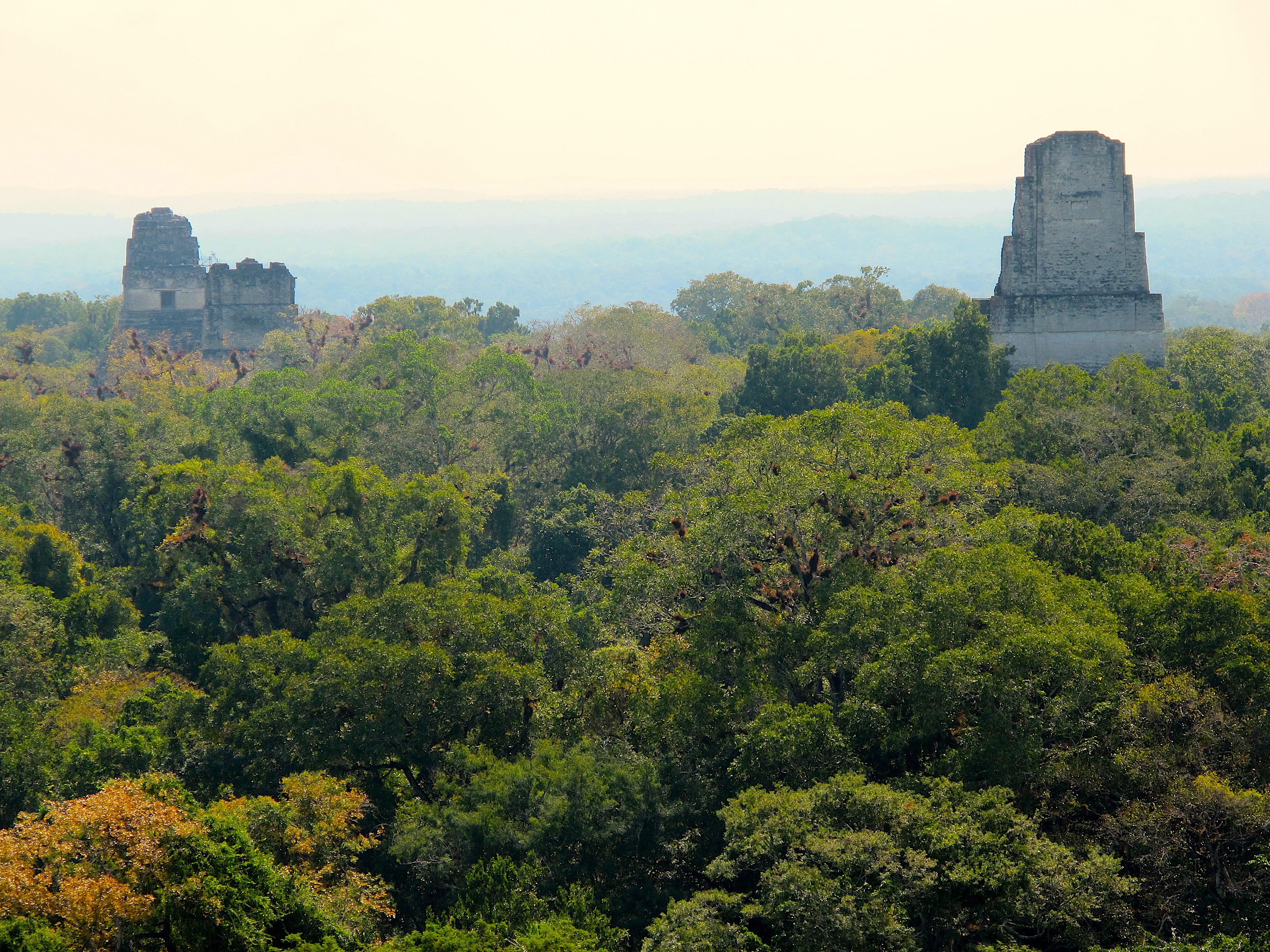
Adventurouspirits
The central section of the ancient city of Tikal is located in area about 16 sq. km and has over 4000 structures. The Maya settled here around 700 BC and the area continued to grow until it began to wane 1600 years later. It is one of the greatest Mayan ruins in the world. We were stunned at the size and diversity of the temples. We climbed up Temple 1V and gazed down on several surrounding temples, which soared higher than the jungle tree canopy. I always try to imagine what life must have been like at that time, when compared to how different life is now for the local Mayans in Guatemala. We explored for over 6 hours before heading back to camp for a nap. Then later in the afternoon we hiked back to experience the ruins as the sunset, what a wonderful day. That evening we were treated to stunning sheet lightening performance before a soft rain settled in and cooled everything down. The birds stopped chattering; settling down for the night and the frogs announced their presence.
Enlarge
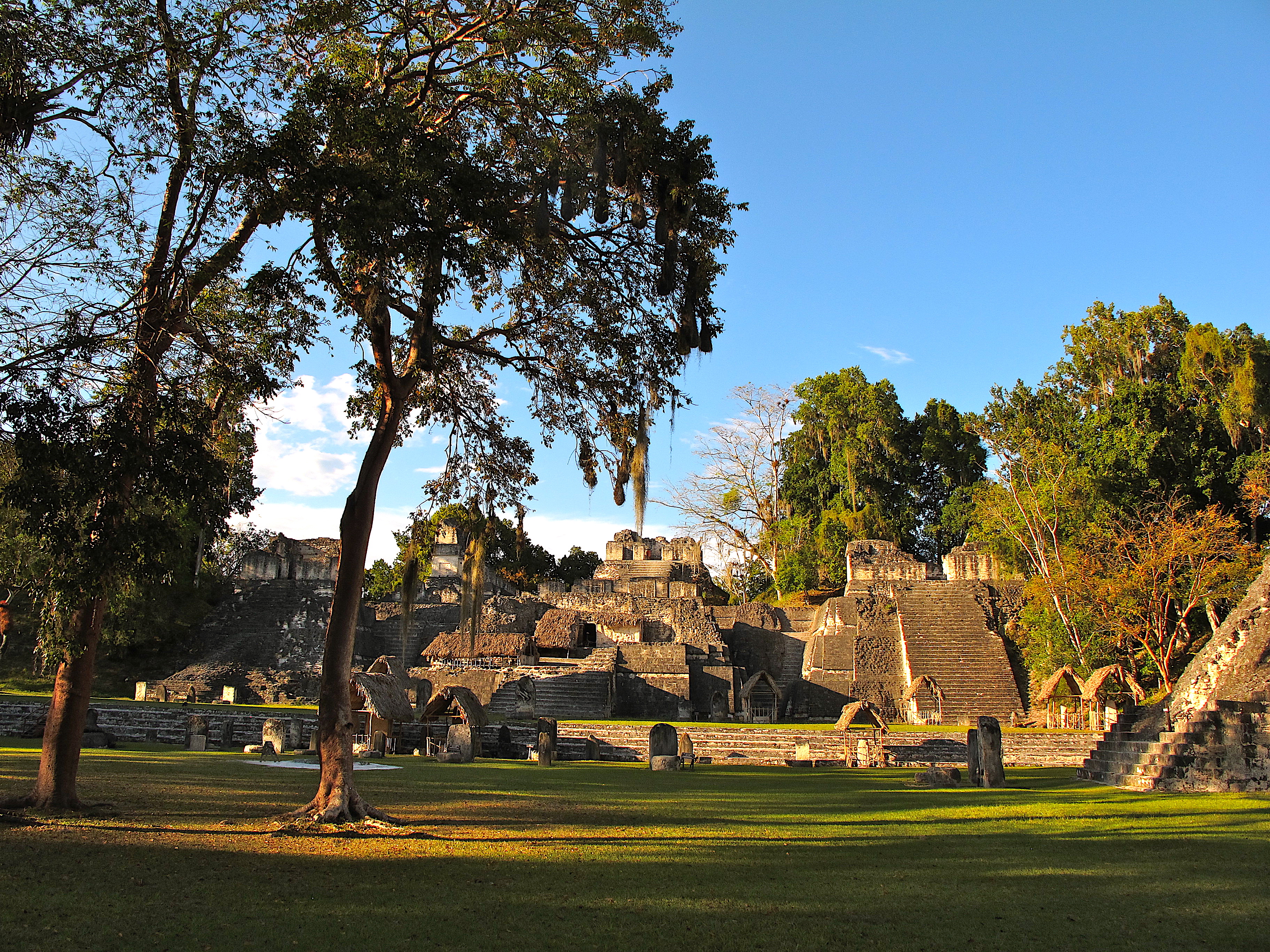
Adventurouspirits
Enlarge
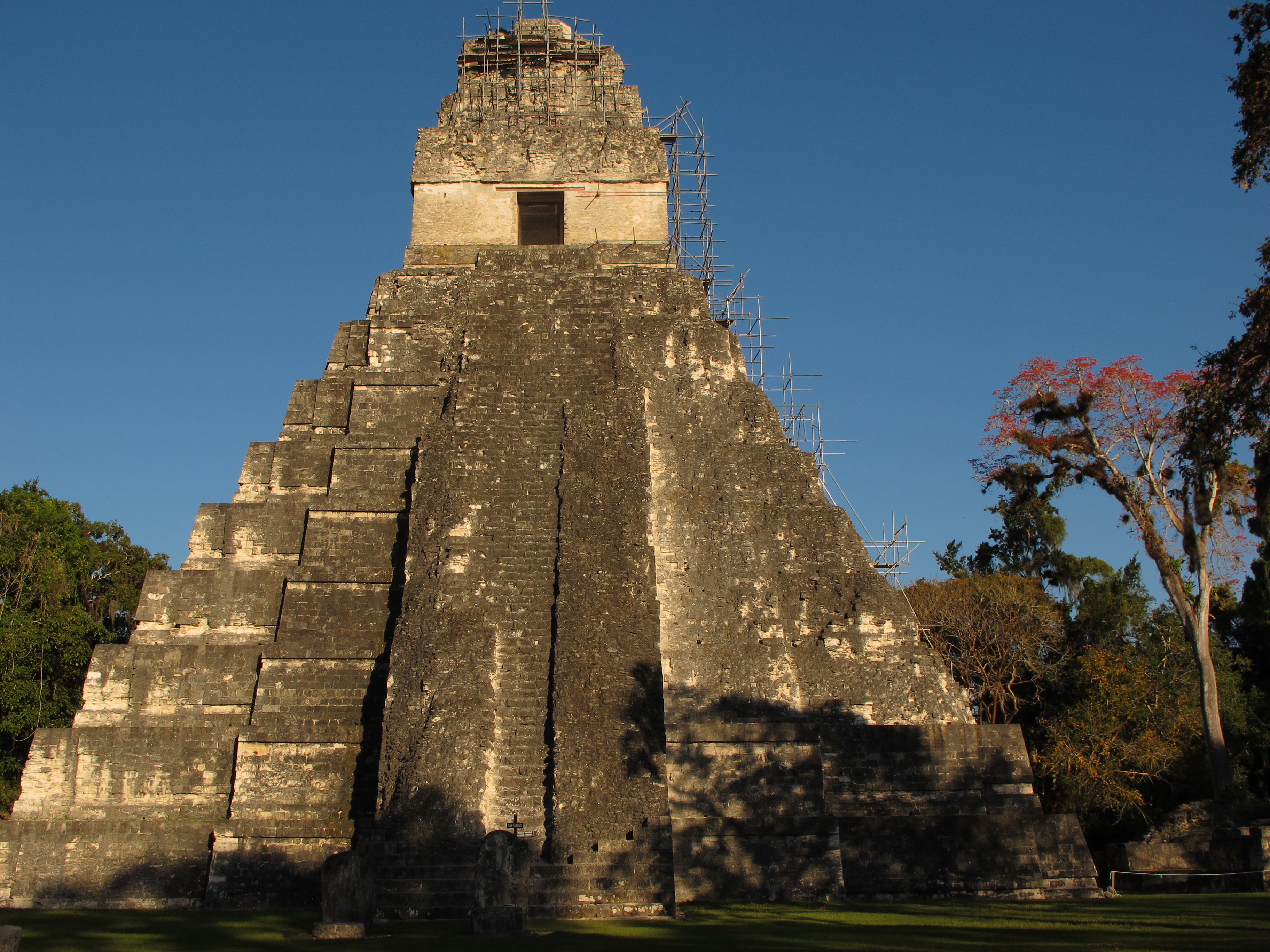
Adventurouspirits
Enlarge
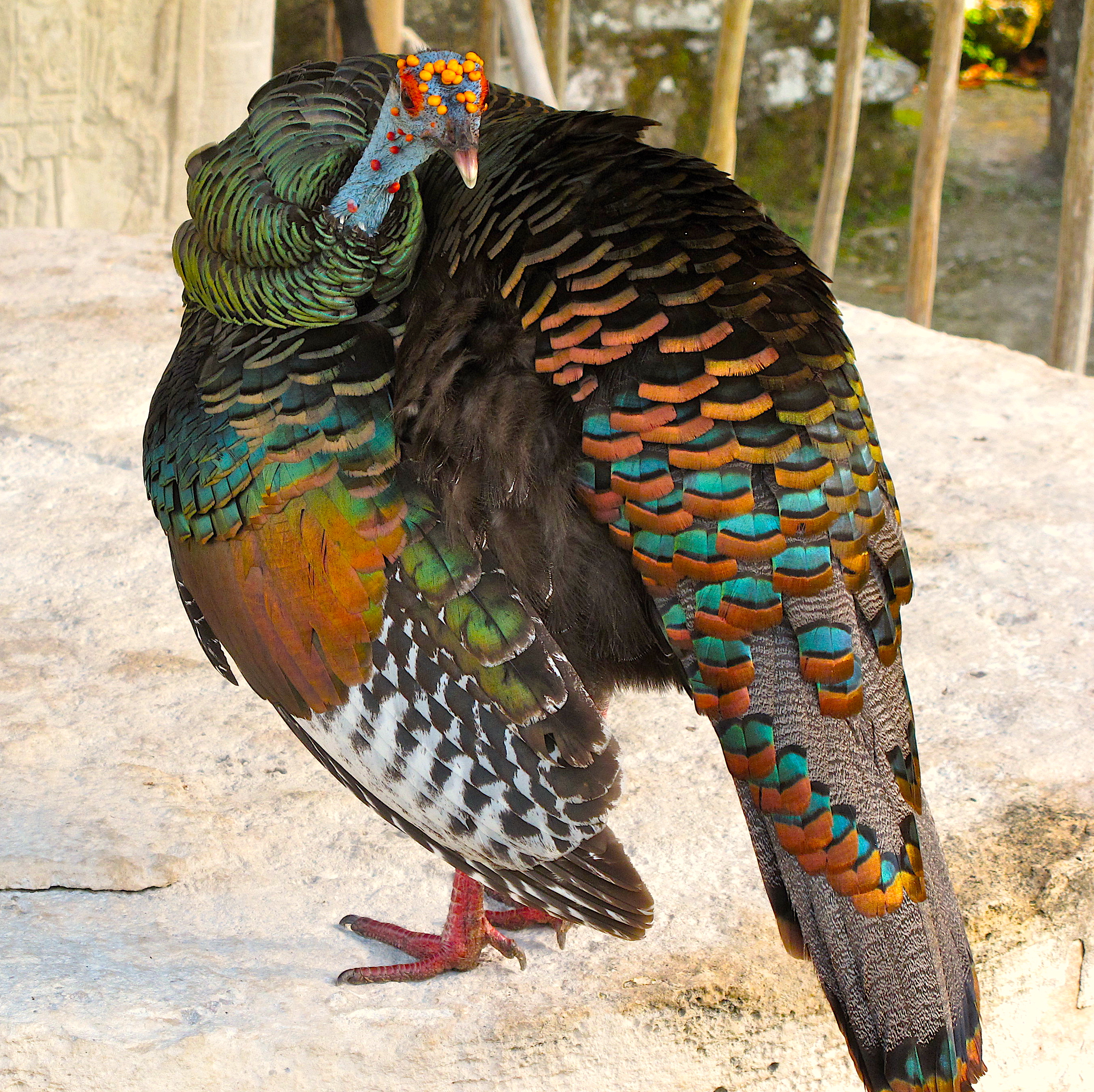
Adventurouspirits
We headed along the north shore of Lago de Petén Itzá and stopped at Sugar Sap for coffee. Here we met Ramon the owner, his wife and three children. What was to be a quick stopped ended up after several hours of chatting and a swim in the lake.
Enlarge
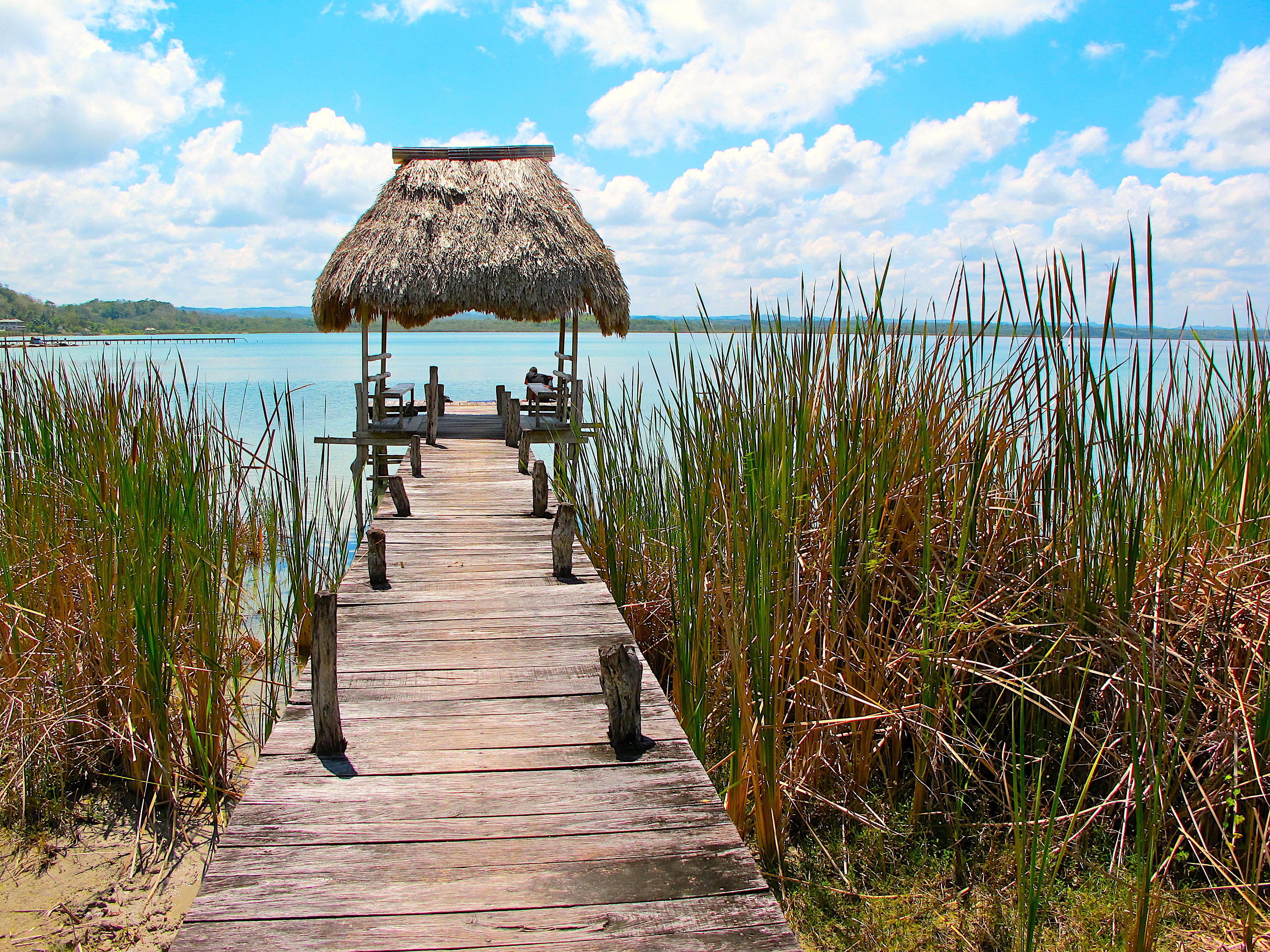
Adventurouspirits
Enlarge

Adventurouspirits
El Paraiso is unique in that it is a boiling hot thermal waterfall. Tom was the first to venture in, not that I am afraid of hot water but there are little fish that bite you, like miniature piranha. Ok so that is a little dramatic but still the thought of hundreds of little fish trying to eat me alive was not that appealing but I eventually did get in. I swam all the time thinking that if I kept moving the fish would not be able to bite me, and it worked I was the only one in the pool not complaining about being bitten. One has to swim quickly through the waterfall to reach the cave behind it and sit in the sauna it is something quite unique.
Enlarge
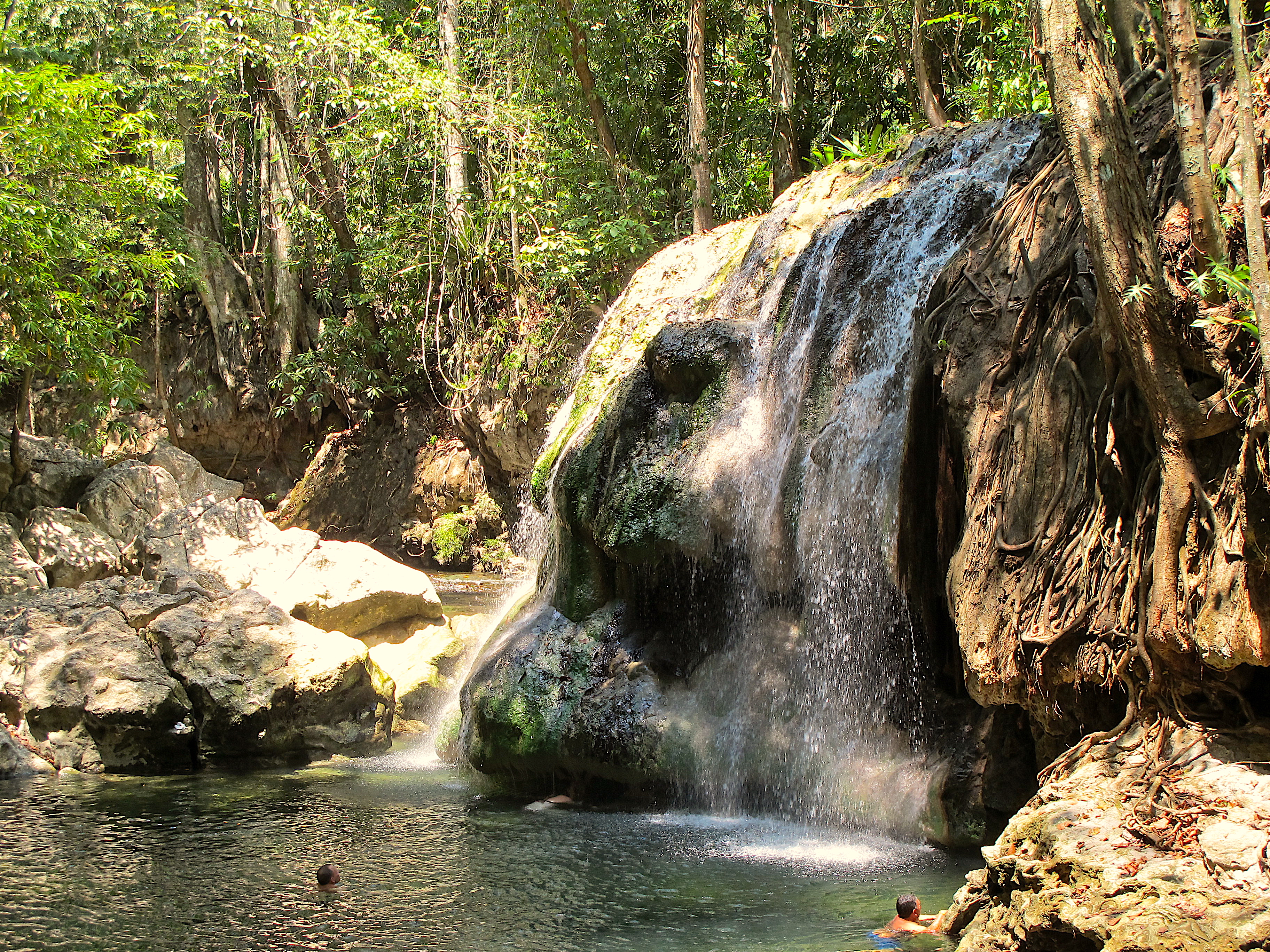
Adventurouspirits
We arrived in Rio Dulce and headed for the marina where we had heard that we could park and camp. It is underneath the largest bridge in Central America, so we did not sleep. Instead we listened to the constant stream of trucks change gears and put on their engine retarder breaks and oh I nearly forgot the cats fighting under our truck had Tom out at 3am running around the parking lot in his PJs. This is our nosiest campsite ever. We could stop by and stay at an Autohotel pretending we are lovers but just have a good sleep. The Autohotel are discrete little hotels that have a garage attached to the room so that nobody can see a couple’s vehicle parked at the hotel while the couple have a few minutes/hours together. Life in Guatemala must be fun for many as there are lots Autohotels.
Enlarge

Adventurouspirits
In the morning, Tom was exhausted so after locating an electrical outlet to plug our camper into, he headed back to bed. I was getting dressed when I saw smoke and yelled, “Fire!” to Tom. Both of us jumped into action, Tom yelling at me to get the fire extinguisher while he pulled the cushions off the seat to get into the compartment from which the smoke was billowing. We could not see anything on fire but smoke was pouring into the camper. Tom yelled at me to unplug the extension cord that he had just plugged us in and I yelled back, “I have no clothes on!” as I jumped outside to unplug the cord. Tom by now was opening the battery compartment, which is located outside the camper. He reached in and the battery terminals were so hot he could not touch them. We think that the battery, although tied it down has been shaken about a lot on the bad roads, and the battery terminals nuts had worked themselves unloose, thereby creating a gap across which the current was shorting. We were so lucky that we were both in the camper at the time I hate to think what would happened if we had been away.
Tom was by now fully awake as was the whole of the marina. We put on quite the show.
Now that we were fully awake and I got dressed and made myself respectable!
We then took a boat ride down the Rio Dulce river to Livingston a little scraggly village on the shore of the Caribbean Sea. This village is strategically located with no road access but with good waterways through dense vegetation. Boats travel between Honduras, Belize and Guatemala and this little village has become a convenient access point for the northbound drug traffic. The river Rio Dulce is beautiful we went past little houses built on the waters edge, locals in dugout canoes fishing, the steep walls of the hills and then sheer rock walls surround the river way. We arrived at the village and headed off to explore, the houses tell the story of a village under siege, walls and fences with razor wire surround the houses and bars in front of windows and doors. The town has an edgy feeling and we do not linger alone on the beach but head back to town for a cold drink.
Enlarge
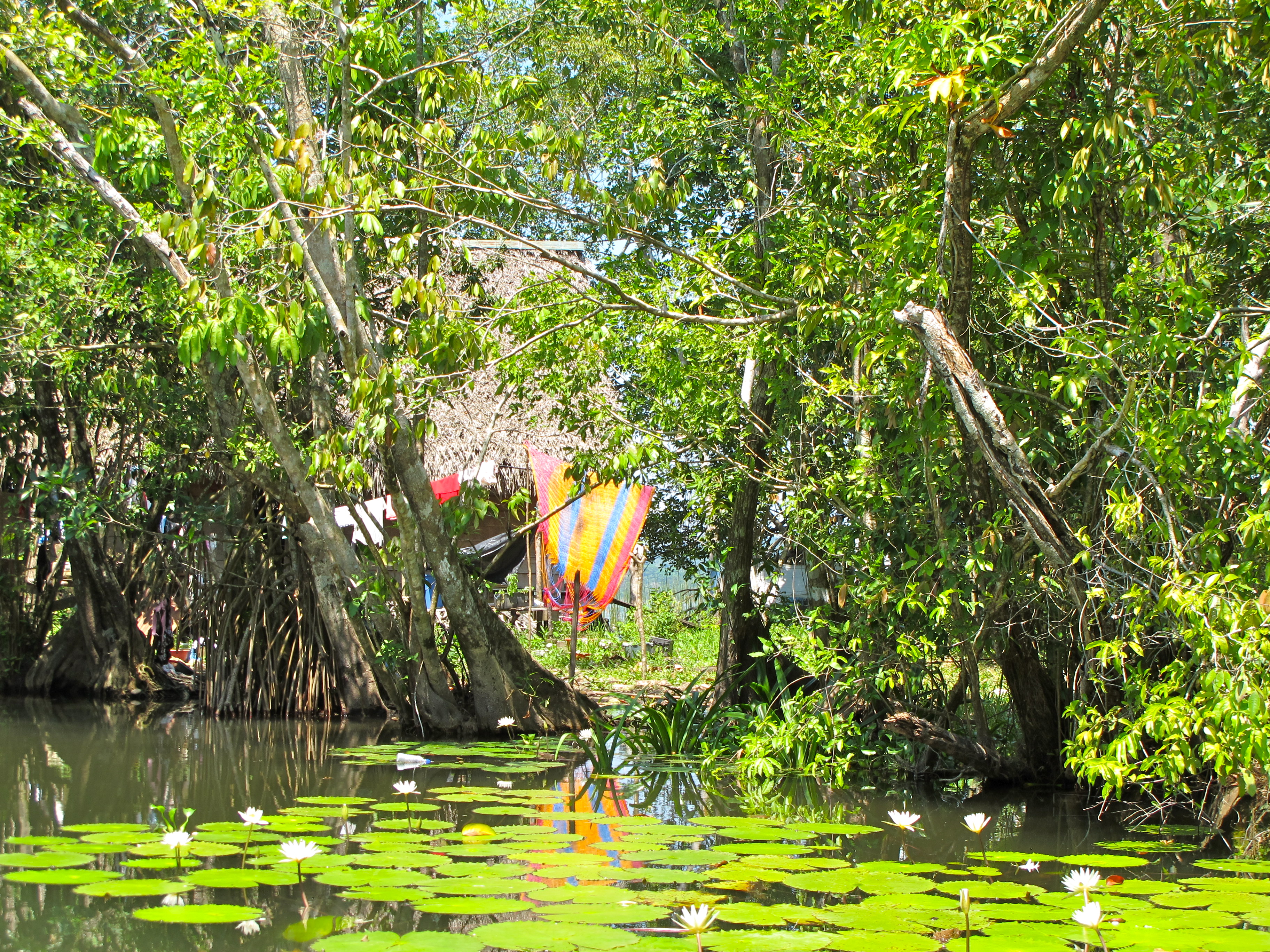
Adventurouspirits
Enlarge
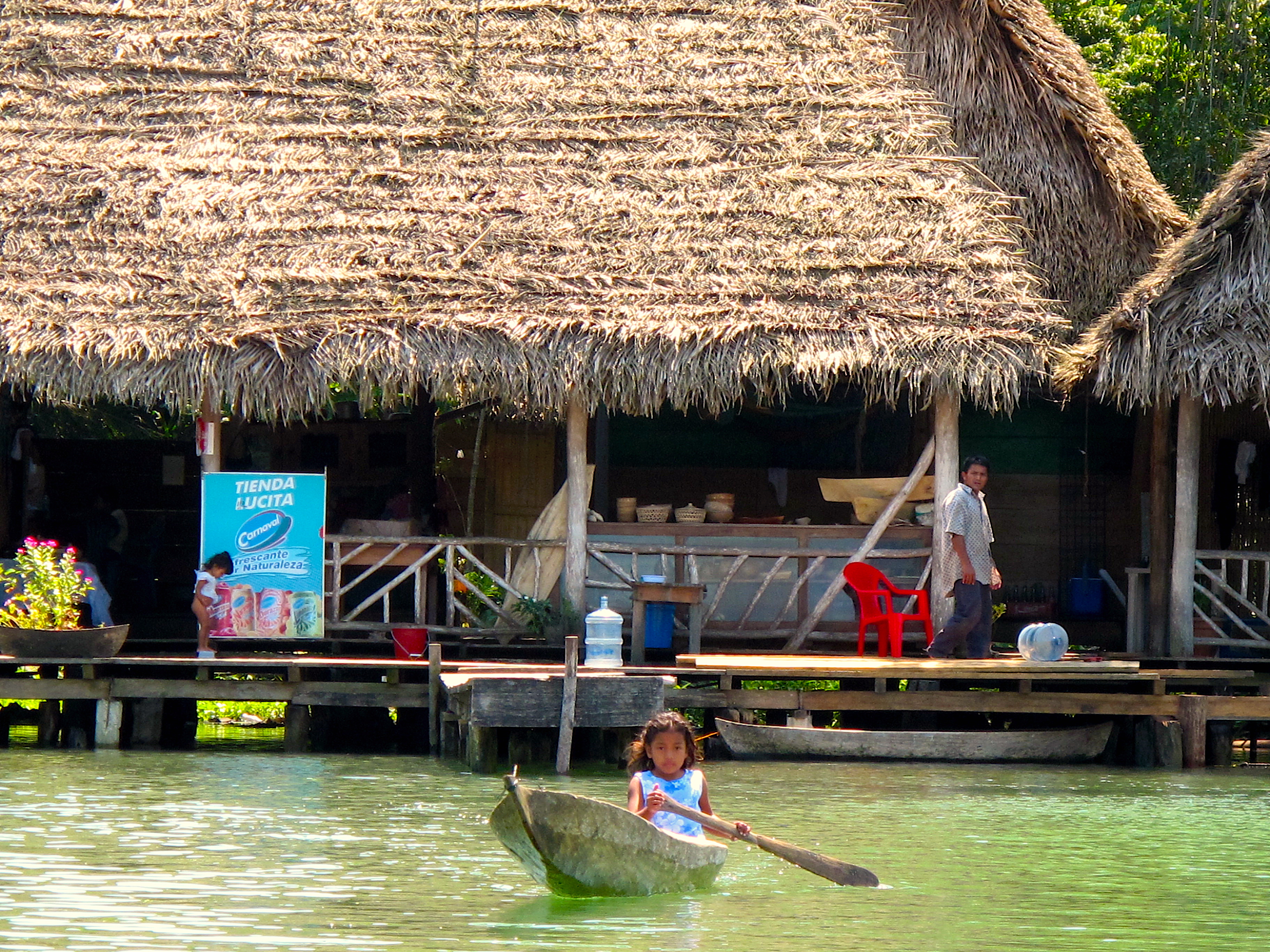
Adventurouspirits
Enlarge
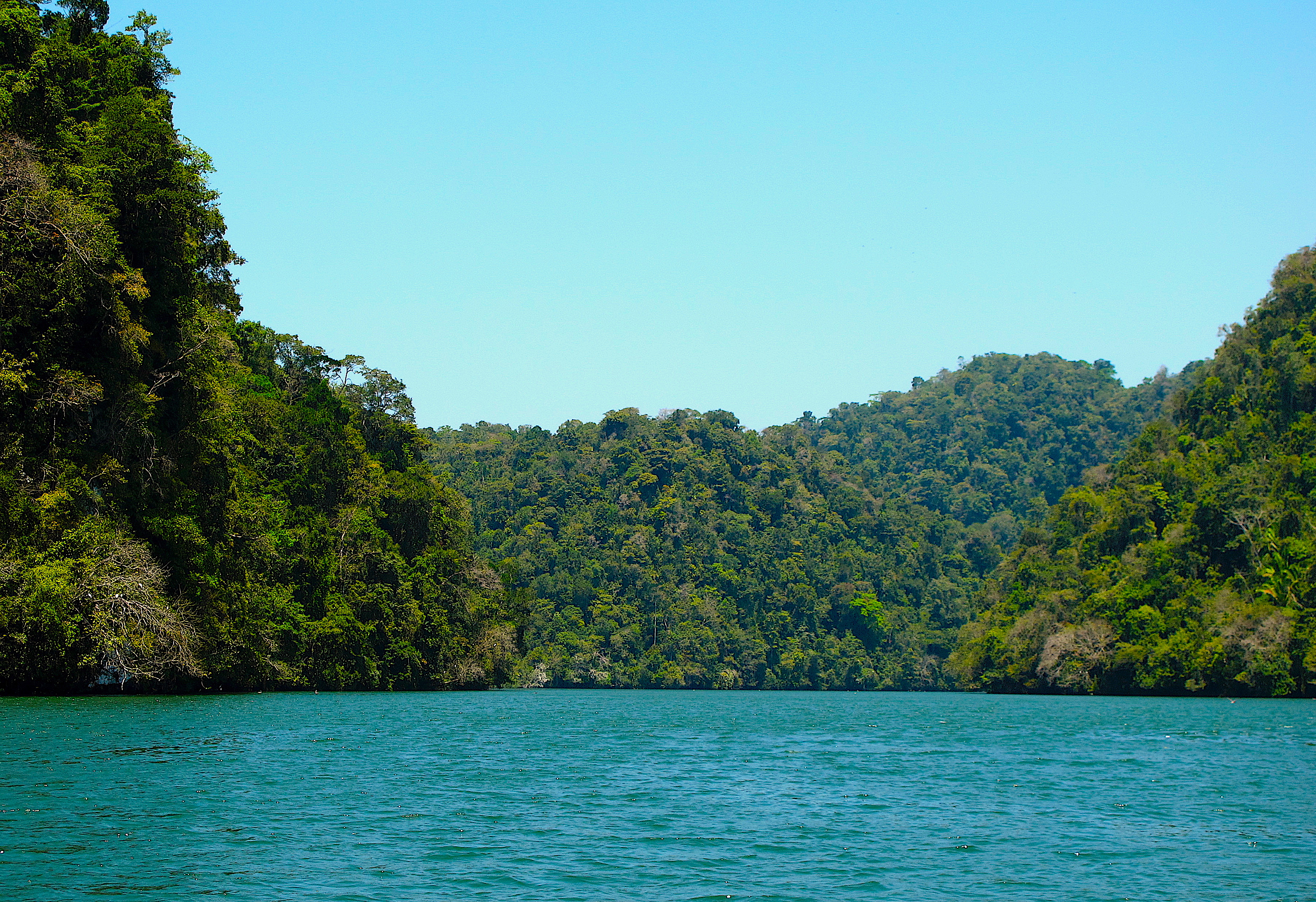
Adventurouspirits
We are leaving today and heading for Antigua. The northern east part of Guatemala is in a state of emergency because of the problems with drug trafficking so will not be going into that area to explore some of the supposedly most beautiful places in Guatemala. Antigua is a charming village, located about an hours drive from the capital, Guatemala City. Its narrow cobblestone streets are lined by colourful buildings and the carefully restored cathedral overlooks a large plaza with a fountain graced by shady trees. The village is nestled between three volcanoes. It has suffered many devastating eruptions and suffered its last earthquake in 1976. We have heard no rumblings since our arrival although with the disastrous earthquake in Japan it is very much on our minds. Tom the geologist giving me a full update about the tectonic plate boundaries beneath my feet and what they could get up to. I glance up at the volcanoes in the distance is that smoke or cloud I see above it?
Enlarge

Adventurouspirits
We arrived in the town of Antigua ragged as the drive here was hairy. Guatemalans seem to have a Russian roulette style of driving. Whoever can overtake the most vehicles on a solid line around a blind corner, at the fastest speed, wins. Chicken buses colorfully painted, belching black diesel fumes and packed with passengers seem to have mastered this skill. We won’t be riding any Guatemalan “chicken buses”, because we are too chicken.
Enlarge

Adventurouspirits
Enlarge

Adventurouspirits
Enlarge
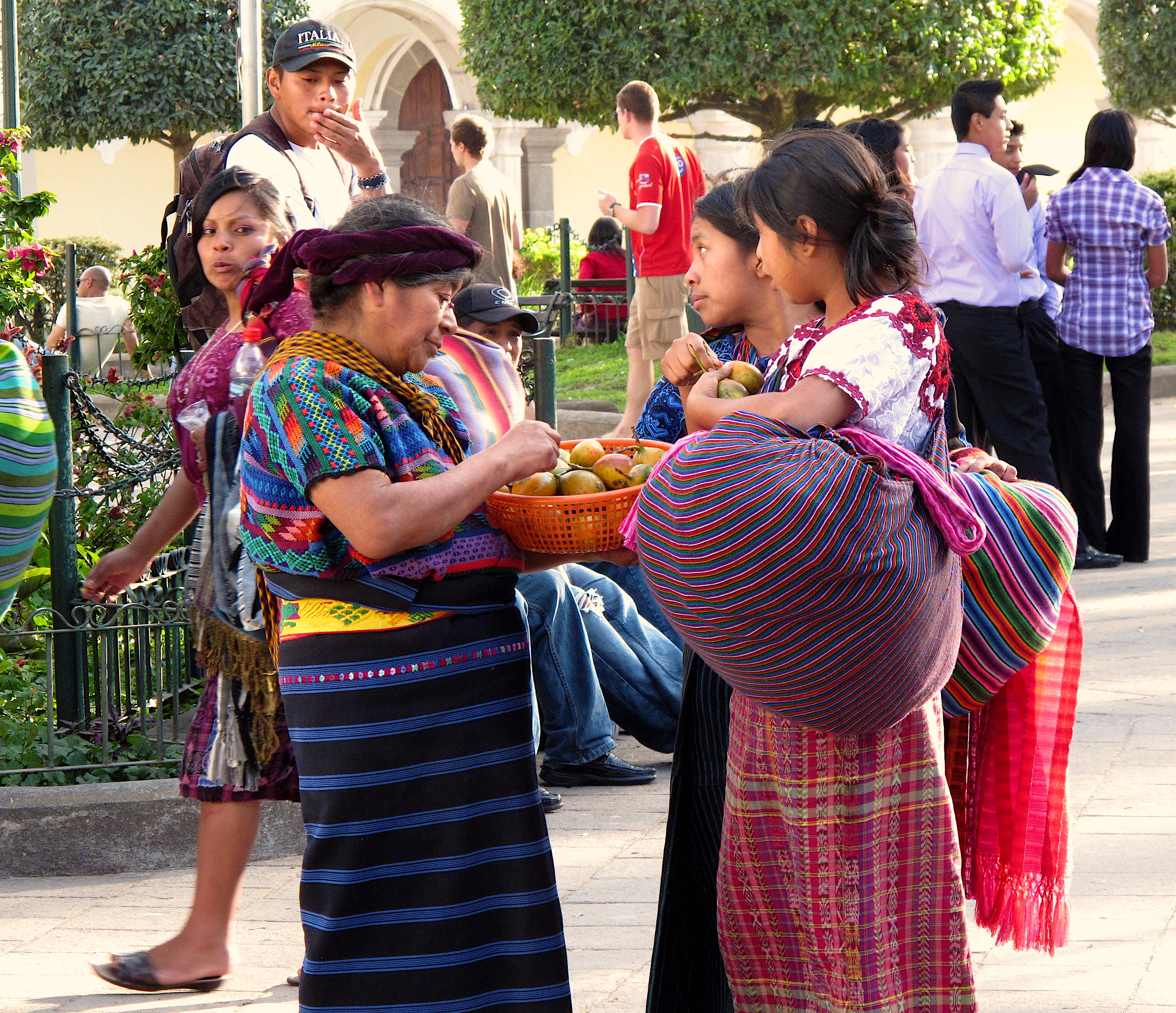
Adventurouspirits
We camp at the Turistico Policia located in the ruins of buildings destroyed during an earthquake. It is free to park there and we meet several other folk all traveling south to either Panama or Argentina. In fact we meet 12 other couples and families all Europeans, French, Germany, Swiss or from Netherlands. We are the token North American and even then we weren’t actually born in Canada, but South Africa. Where are all the Canadians and Americans?
Enlarge

Adventurouspirits
We enroll for our 2 weeks of Spanish lessons before heading off for the weekend to explore Lago de Atitlan; a lake created by a massive volcanic eruption over 85,000 years ago. Today the lake is surrounded by 3 volcanoes and several little villages some of which can only be accessed by boat.
Enlarge

Adventurouspirits
We arrive at Panajachel the main town on the lake and head to the docks to take a boat to a lakeside village. In the Lonely Planet it warns of overcrowding on the boats and suggest one makes sure the boat does not have more than 14 passengers. Several tourists were drowned in an accident recently.
We climb on board and I do my count and we are safely within the limits, but as soon as the boat begins to show signs of leaving there is a massive scramble, luggage and bags are thrown onto the deck and people scramble aboard. We leave with 24 people all crammed on board.We arrive at the dock and head for little Mayan village which is actually located high in the mountains and up to which is a hard steep hike.
Enlarge
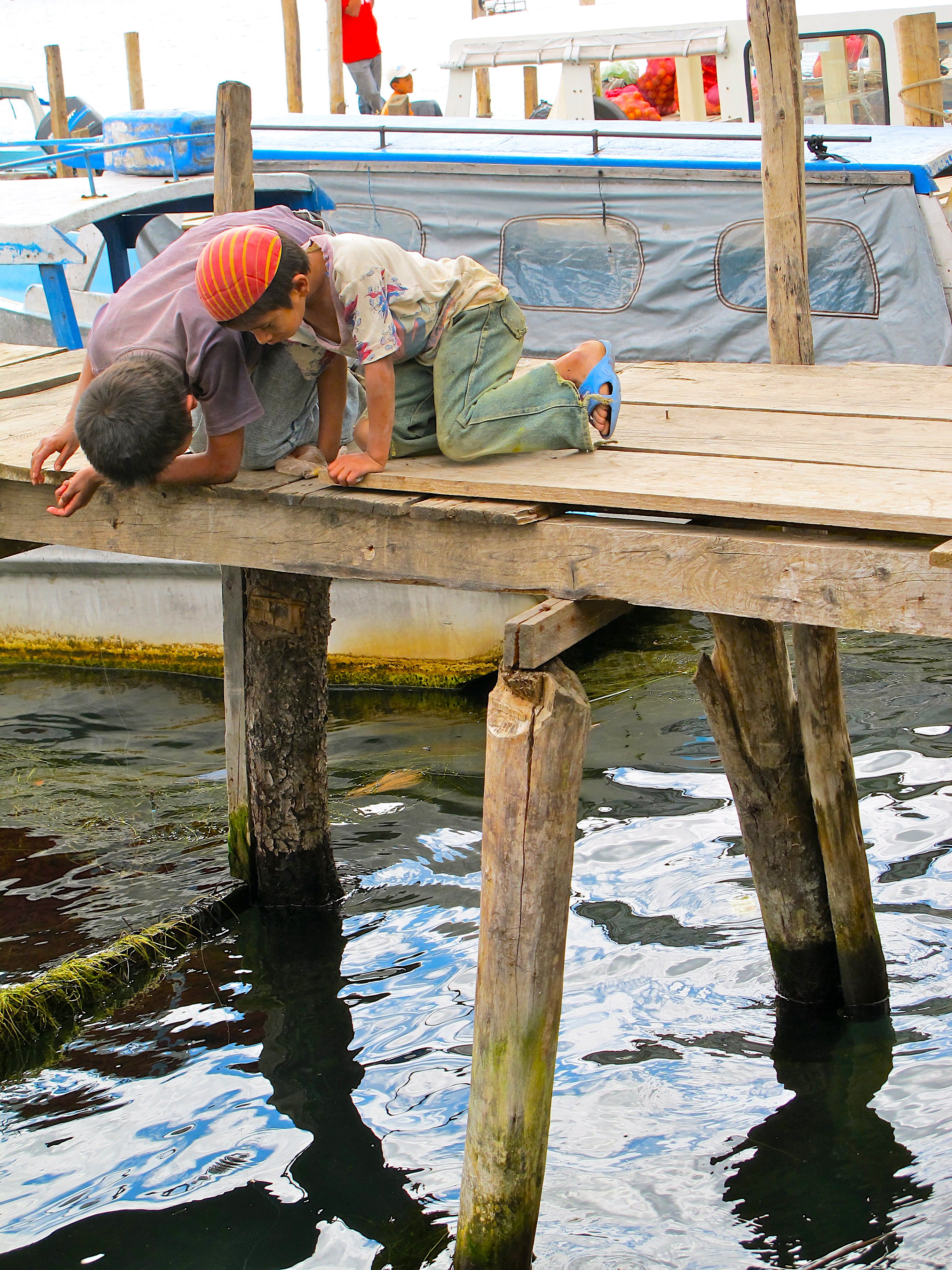
Adventurouspirits
I am complaining, I am tired and thirsty as we trudge up the road leading to the village but am suddenly made to shut up when two little girls perhaps 7 and 9 years of age lugging heavy loads of wood on their backs walk up the hill. They are giggling and happily walking up the hill.
Enlarge

Adventurouspirits
Enlarge

Adventurouspirits
The children go ahead of us, but we wave down a pickup truck and climb on board and together with the locals hang on for dear life as the truck heads up the hill driven obviously by one of those Russian roulette trained Guatemalan drivers and I thought my hitch hiking days were over.
Back in Panajachel we have supper at a restaurant overlooking the lake and are treated to a magnificent sunset.
Enlarge

Adventurouspirits
The following morning we head to Chichicastenango to enjoy the Sunday market. We are in a bus and we “fly” down the mountain pass, steep drops, hair pin bends and oh yes if I dare to look out of the window; great views. I console myself that my will is up to date and what will be will be. We arrive safely and are treated to a Sunday morning market, which surely must be one of the most colourful markets on the planet.
Enlarge
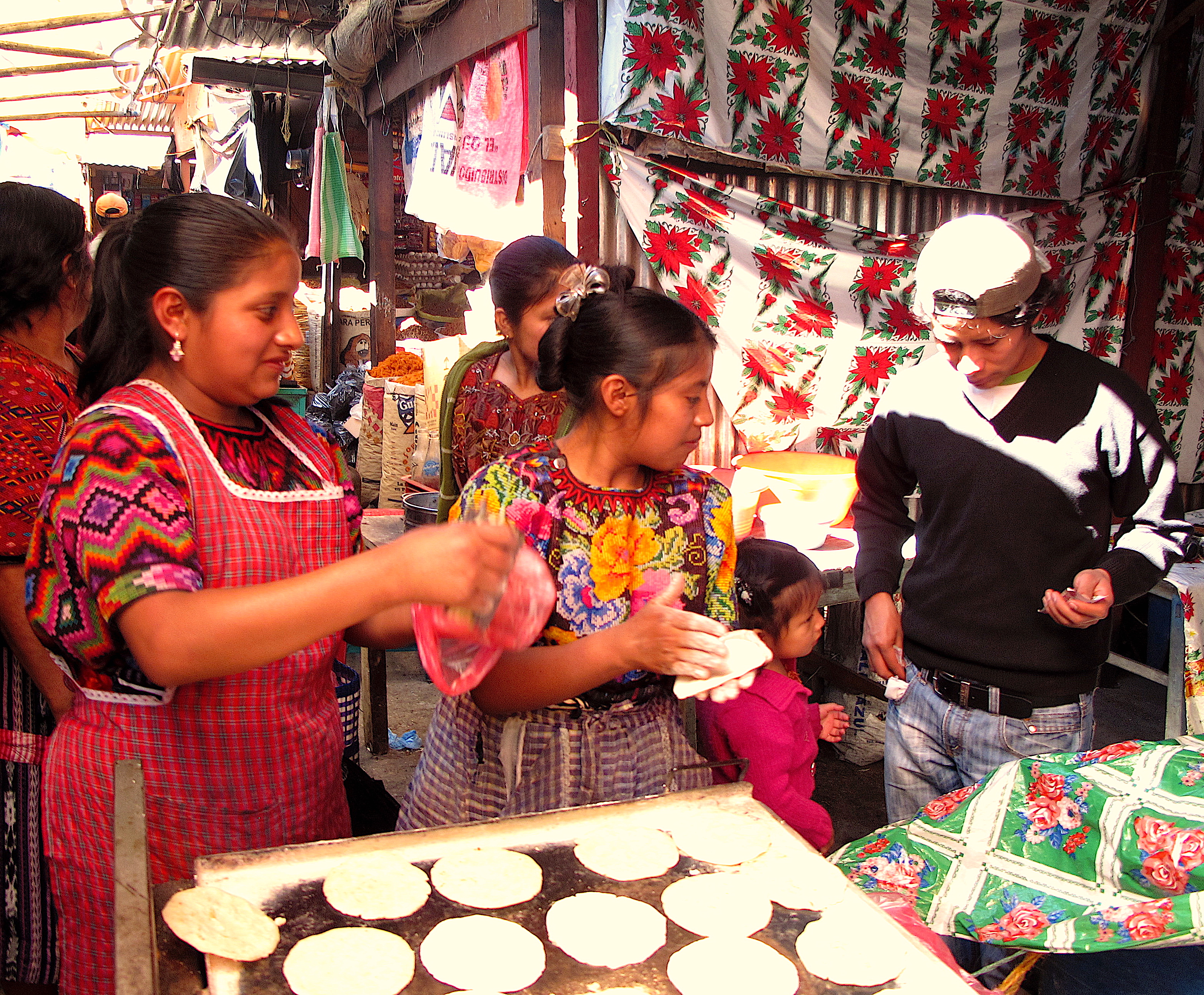
Adventurouspirits
Enlarge

Adventurouspirits
Women weave the most stunningly beautiful creations, clothes, clothing, bags and more. Everything is colourful, their clothing they wear, the wares and goods they sell it is as if the rainbow just landed on Chichicastenango. All women learn to weave and the tradition continues today. Outside the church the shaman burn incense, flower sellers sell flowers and inside rituals that are more Mayan than Catholic take place during this period of Lent.
Enlarge
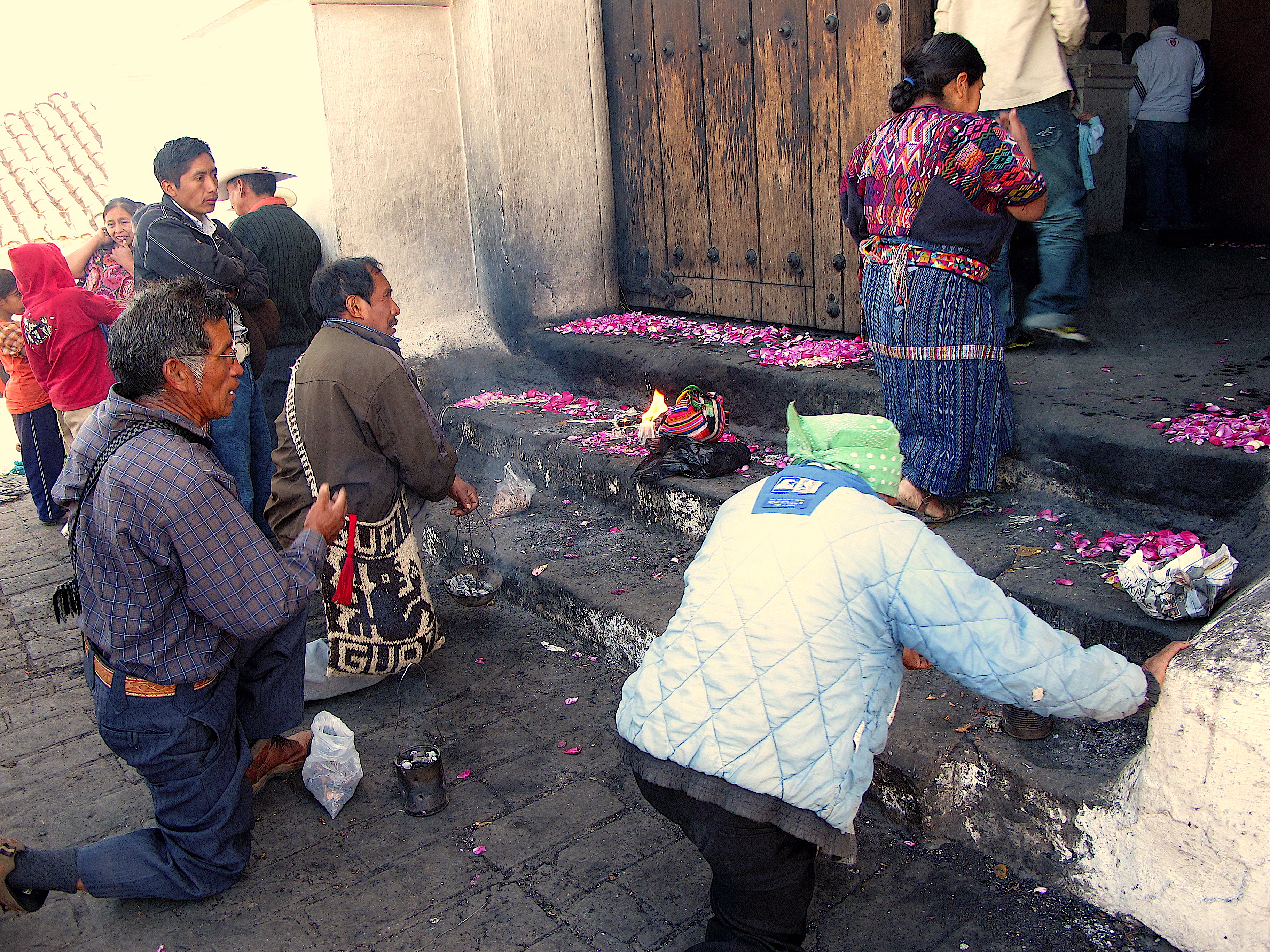
Adventurouspirits
Enlarge

Adventurouspirits
Enlarge

Adventurouspirits
Enlarge
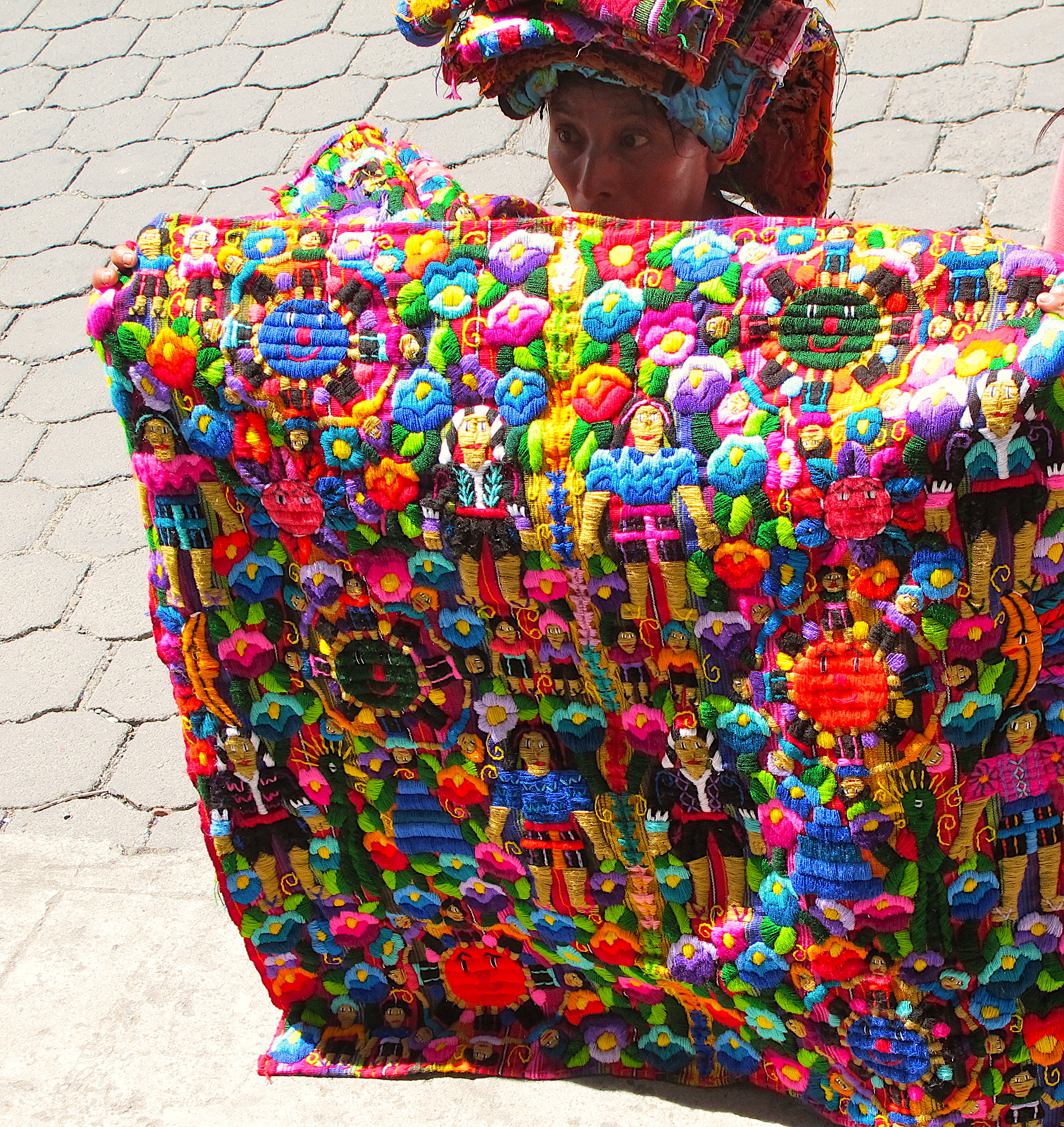
Adventurouspirits
We hire a guide to take us to the shrine of the Maya Earth God on the hilltop. It is steep climb and we climb above the town to a clearing in the trees. The area is littered with offerings, of food, alcohol, tobacco and flowers. We witness a young family undergoing a ceremony with a female shaman. I marvel at their faith, traditions and cultural rituals, it all seem so rich.
Enlarge
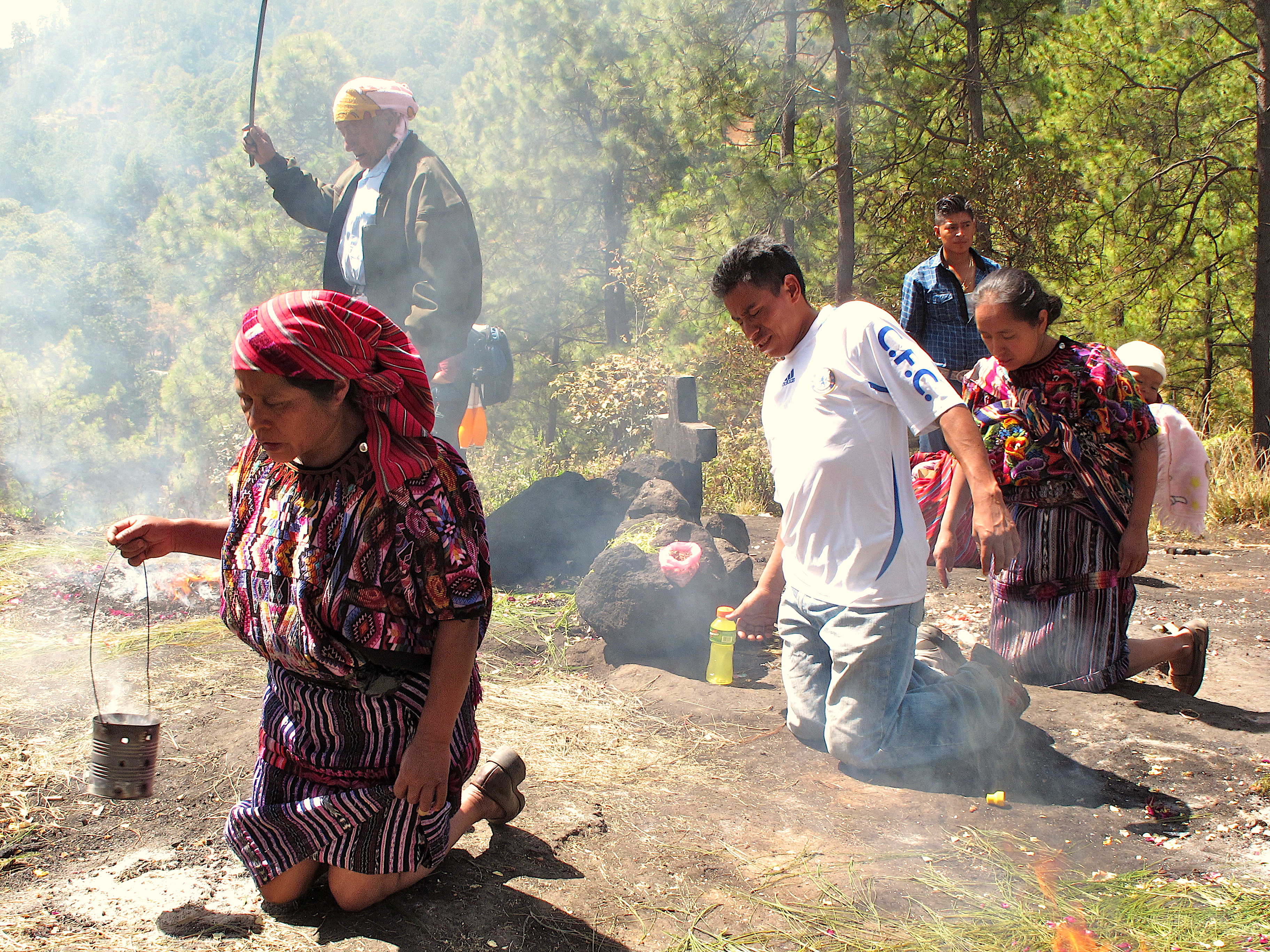
Adventurouspirits
We return to Antigua on Sunday and move in with a Guatemalan family. We decided to stay with a local family hoping we would be able to practice speaking Spanish, but as they could not speak a word of English it proved very difficult for all so we asked to be moved to another family. We moved in with Juanita a wonderful women and great cook. Although Juanita speaks no English her family does so is able to help us out when we get stuck. However my expectations of speaking Spanish is being downgraded daily as I struggle to learn this language. I was hoping to achieve some degree of conversation but I am beginning to think I will be limited to asking for the bathroom or directions in Spanish!!
Enlarge

Adventurouspirits
Enlarge

Adventurouspirits
It has not been helped by the fact we have both had flu and have been miserable. Today Tom refused to eat I have never seen Tom refuse to eat, never ever.
Monday arrives with us off to attend Spanish language school. We each have our own instructor. It is not long before my instructor and I are sharing our life stories. I listen with fascination as she describes life in Guatemala for the average family, their daily struggles, challenges and achievements. I learn more about Guatemalan communities and family life than I do Spanish and reminded yet again how lucky we are.
Enlarge

Adventurouspirits
There are no Easter bunnies or eggs to be found in Antigua. Instead Antigua celebrates Lent with one of the most beautiful religious celebration in the Americas, if not the world. The highlight of our trip to Antigua was the opportunity to experience some of the celebrations that begin on Ash Wednesday the first day of Lent and then reach its climax on Good Friday. Each Sunday leading up to Good Friday the town bursts into colorful celebration and processions.
Enlarge
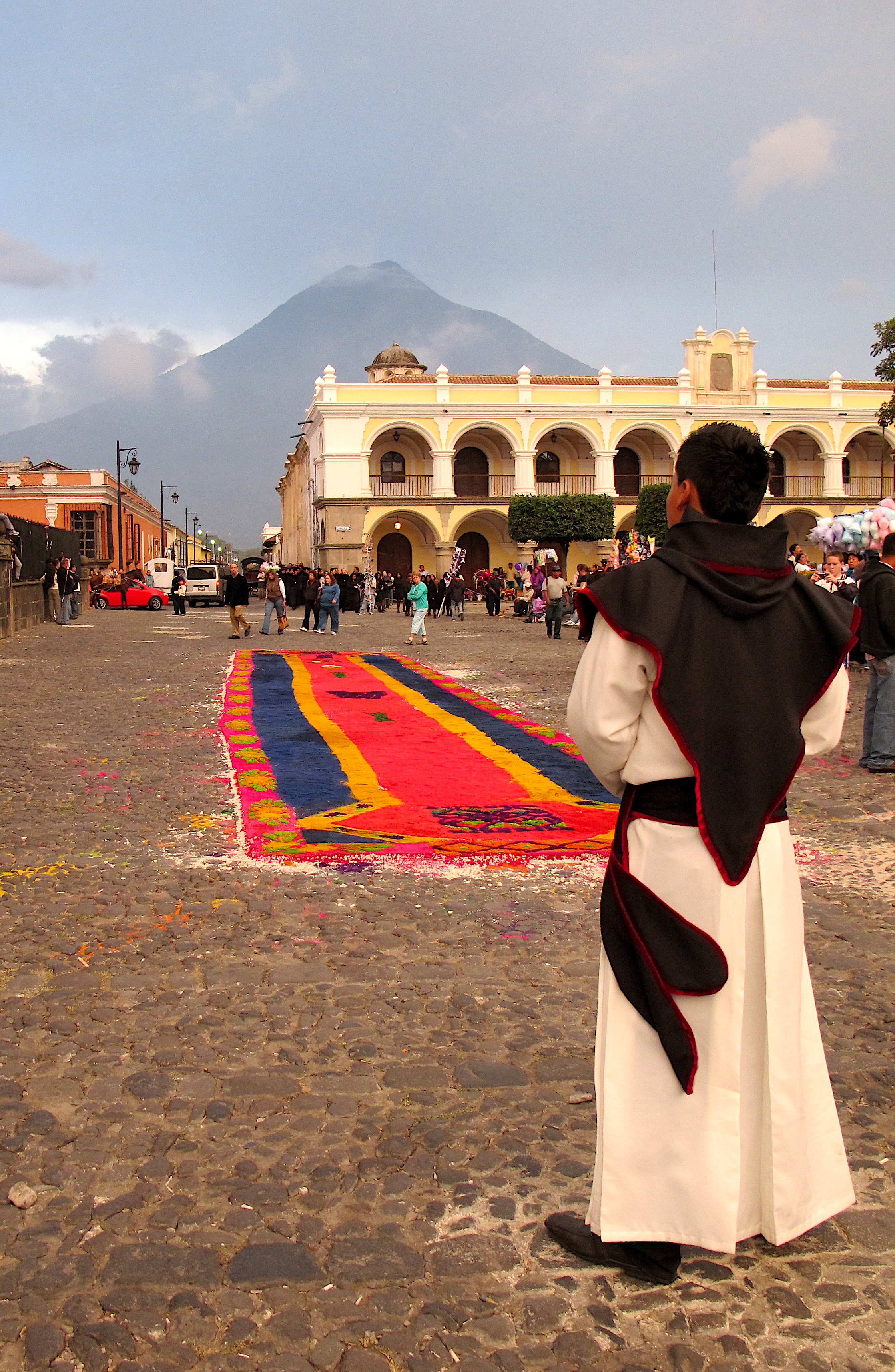
Adventurouspirits
Beginning early on Sunday morning the streets on the route of the procession are cleared and blocked to traffic and the families and communities begin the process of creating colorful “carpets,” which adorn the streets. Using brightly colored sawdust, flowers, fruits, vegetables and other materials they make spectacular designed carpets for the procession to pass over. Sawdust is collected and dyed in different colors the favorite are green, purple, red, yellow, blue and black. Flowers such as bougainvillea, carnations, roses, chrysanthemums and other native plants and pine needles are used. As well several vegetables including cabbage, carrots and leeks. They work for hours meticulously creating works of art, the streets become alive with color. Together with our host Juanita and her family we were able to assist with the making of a carpet. The road was washed before we spread out the pine needles which served as the base then we decorated that with flowers. There are all shapes and sizes of carpets and the smell of the flowers and natural pines fill the air.
Enlarge
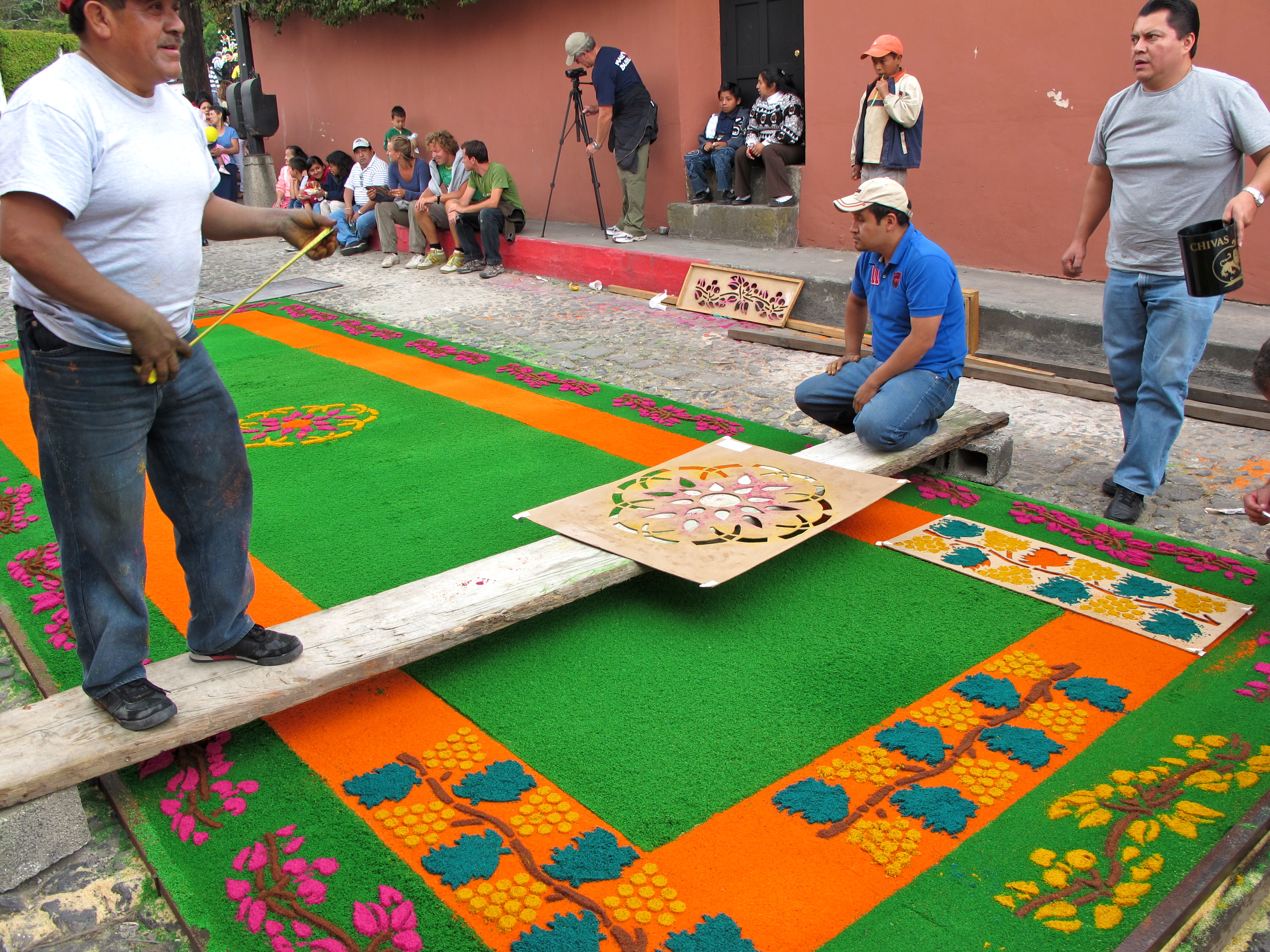
Adventurouspirits
Enlarge

Adventurouspirits
Enlarge

Adventurouspirits
Enlarge
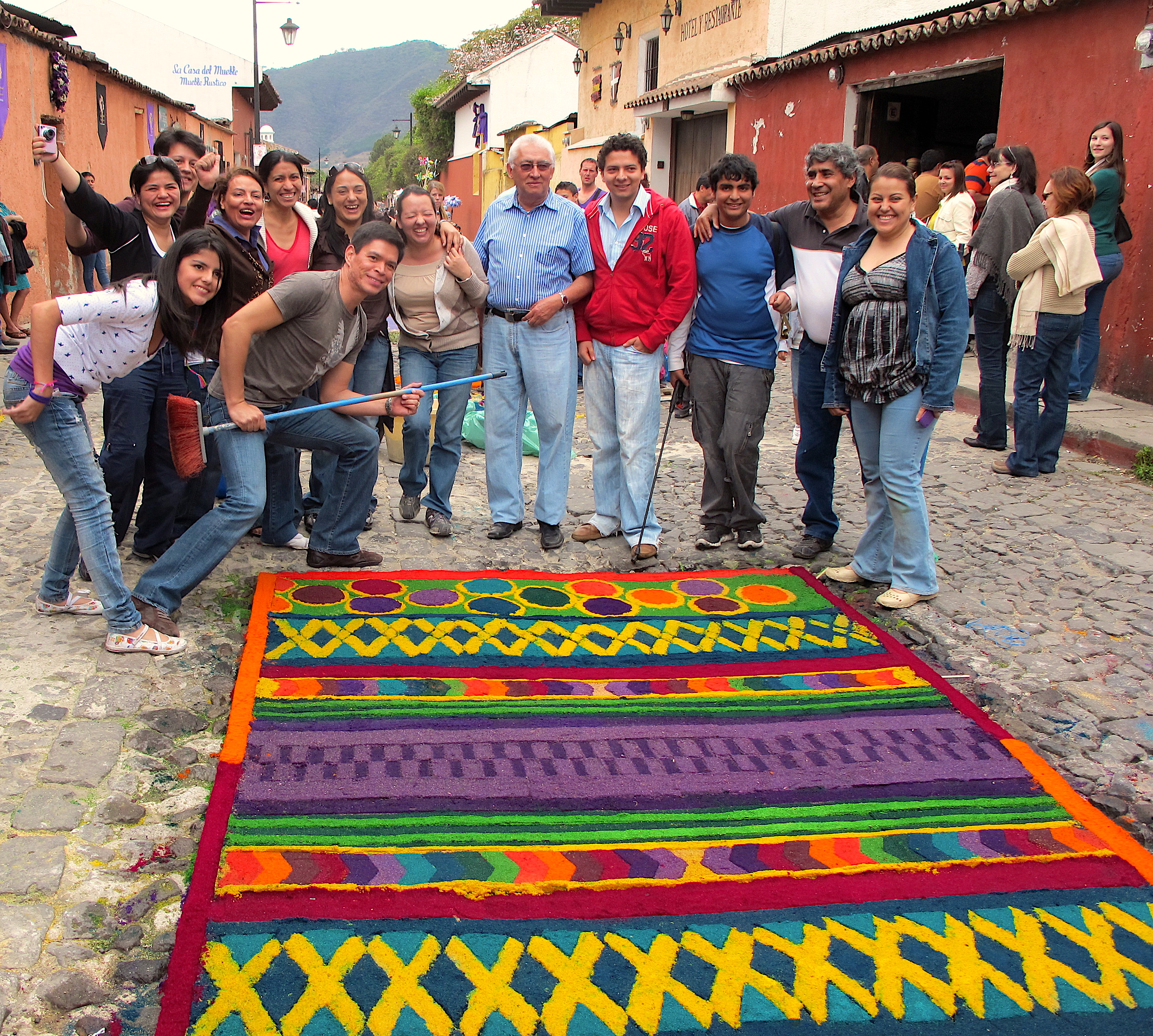
Adventurouspirits
Enlarge

Adventurouspirits
Suddenly in the distance we hear the music of the approaching band and we know the processions is about to arrive. The procession of consists of a big float called an “anda” bearing the statue of Christ with a cross and is carried by purple robed men. The men sweat under the weight of the float and walk 10 blocks before they are replaced by men who have been walking along side. Reverent spectators walk alongside or watch from the sidewalk. Behind the men, a float with the Virgin Mary is carried by women. Between the floats, men in purple wave cans with incense and aromatic smoke fills the air.
Enlarge

Adventurouspirits
Enlarge
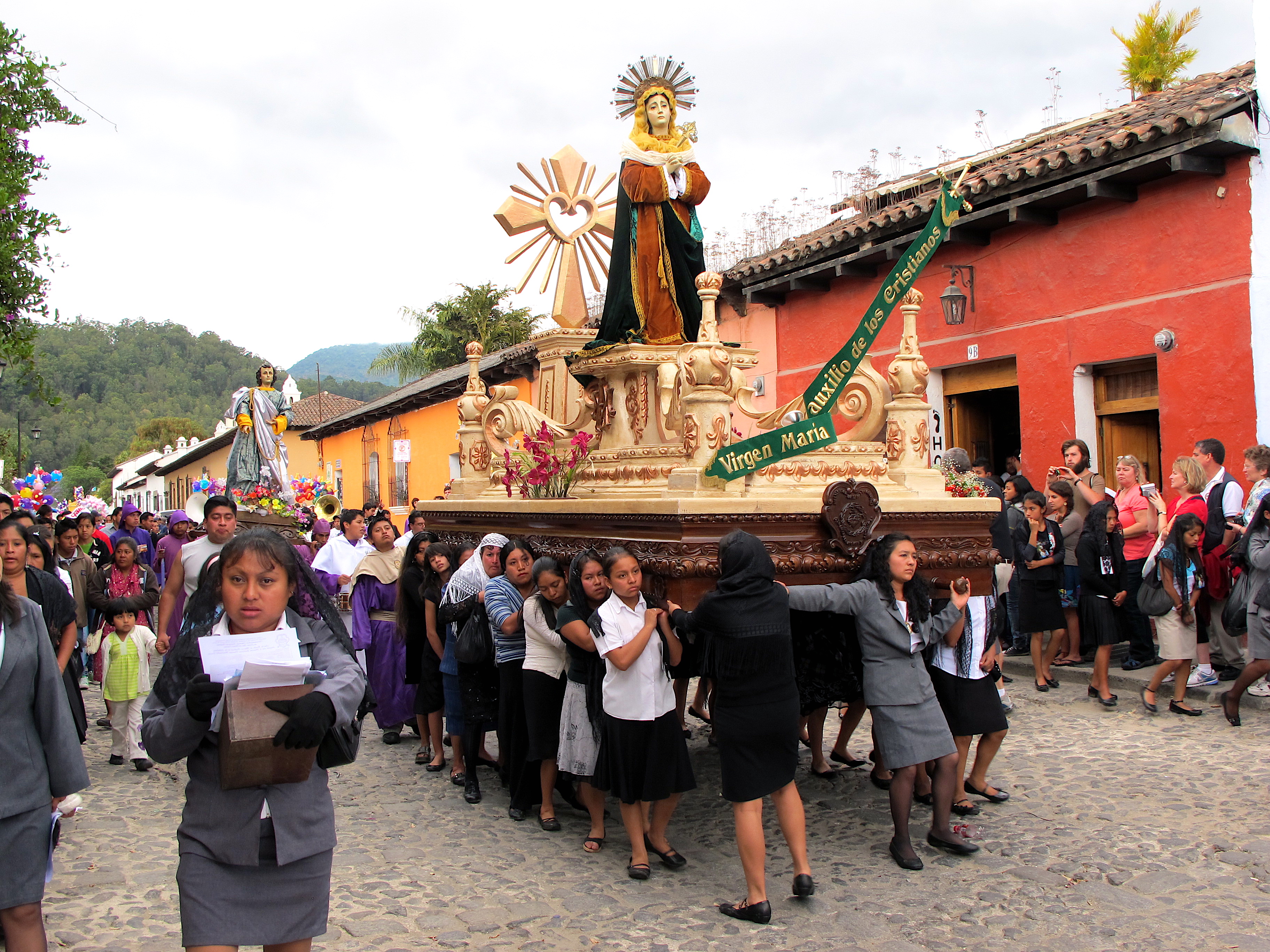
Adventurouspirits
We watch the spectacle in awe, as the processions walk over and destroy the beautiful made carpets. The sawdust and material cushioning the feet of the men and women walking in the procession. As the procession moves on all that is left are the tattered remains of once beautiful carpets. We try to imagine this town during Good Friday when the processions are larger and carpets more elaborate and bigger, it must be a sight to be seen. The procession carries on into the evening.
Enlarge

Adventurouspirits
Enlarge
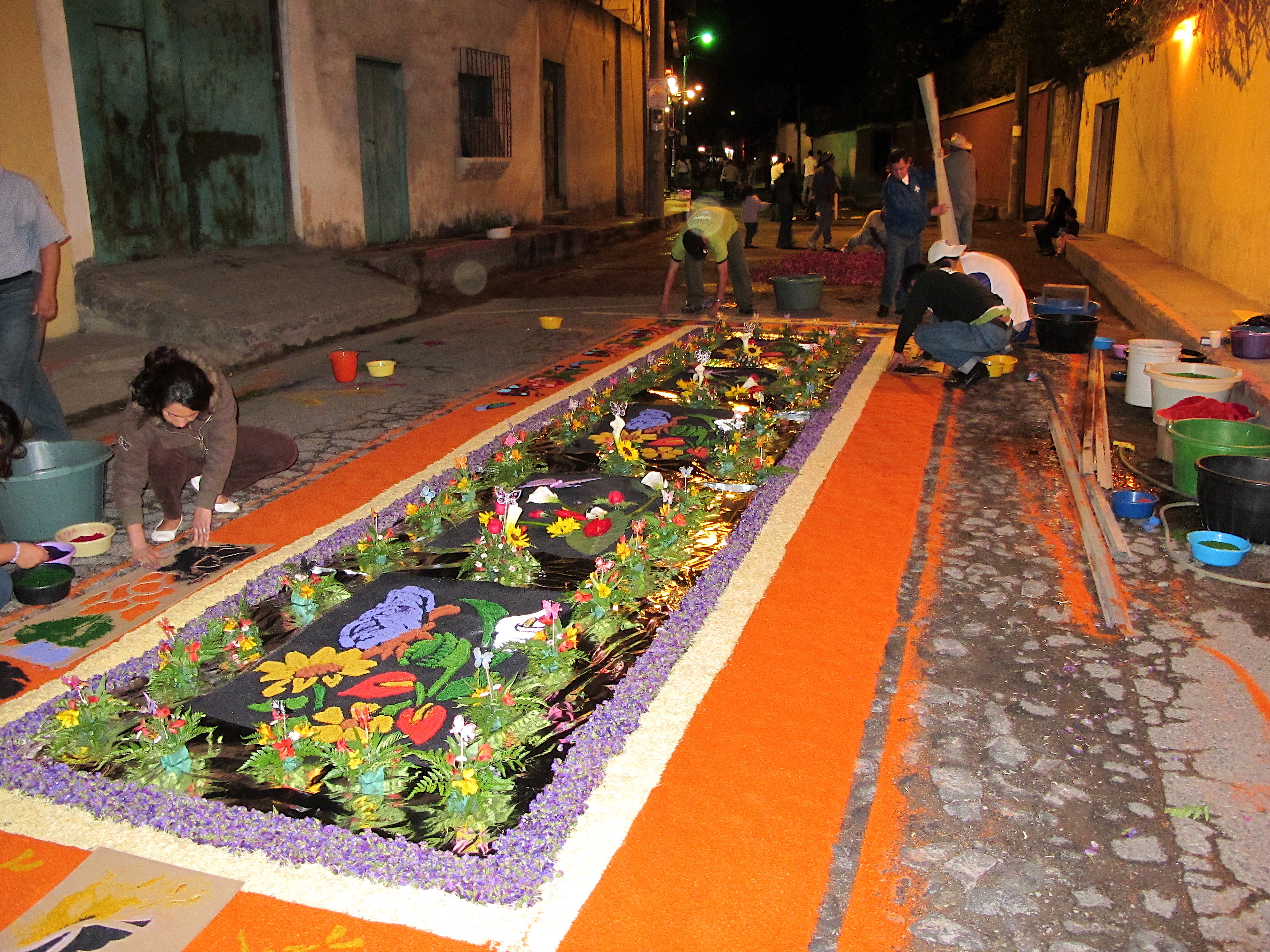
Adventurouspirits
Enlarge
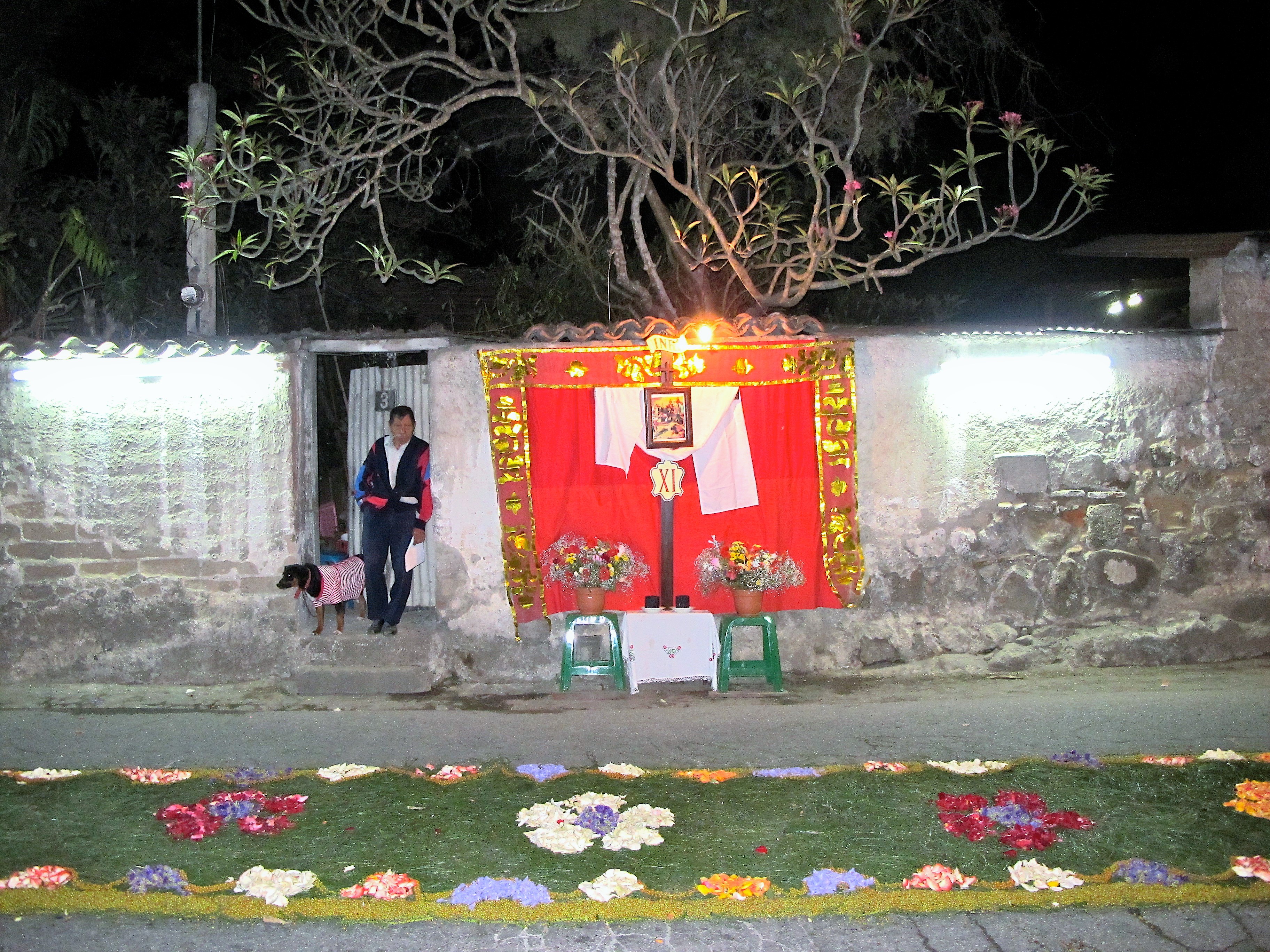
Adventurouspirits
Enlarge
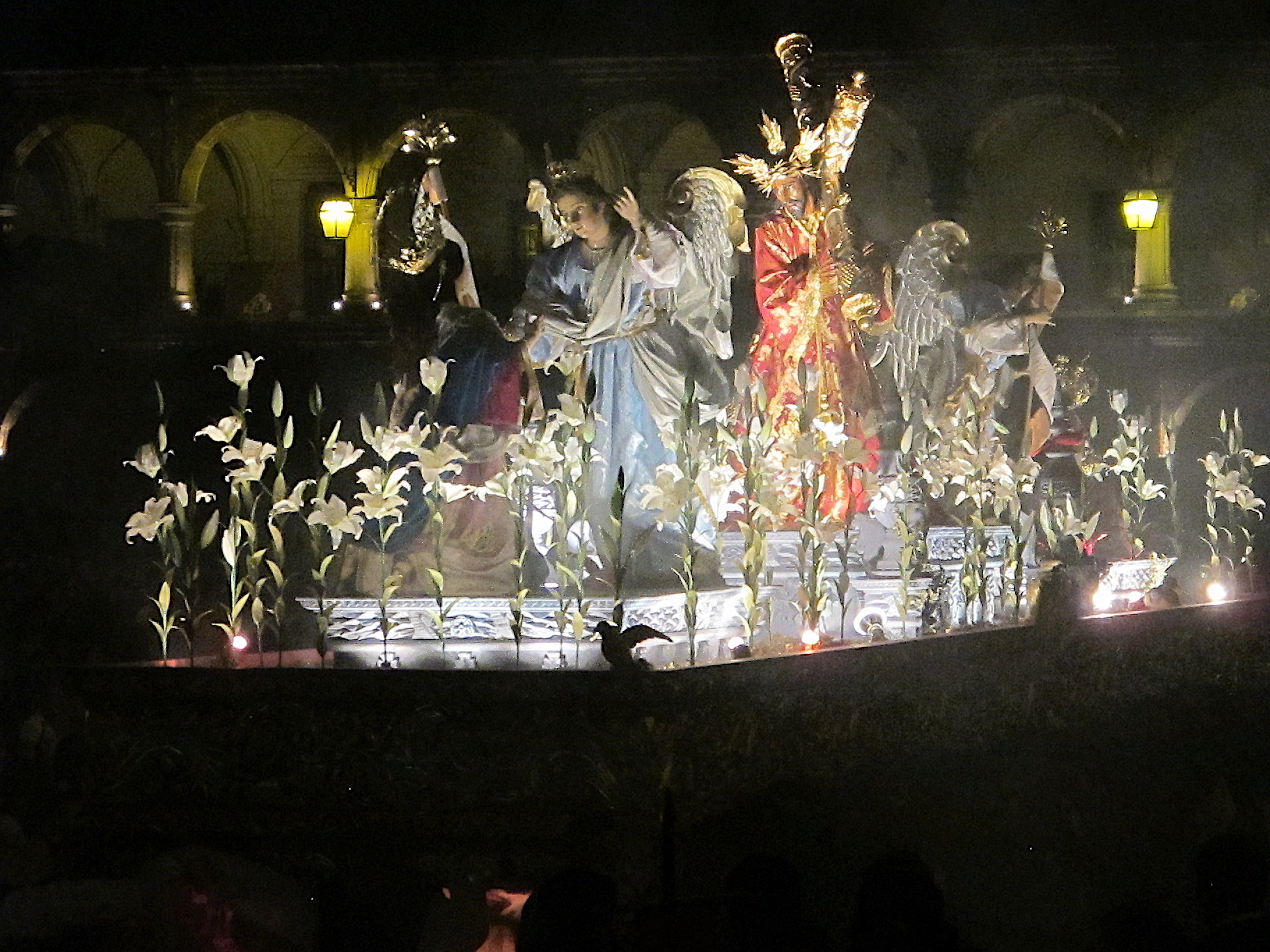
Adventurouspirits
Enlarge

Adventurouspirits
We are finished our Spanish lessons and it is time to move on. We debated for several days which route to take heading for Nicaragua. We had the option of taking a longer route through Honduras and avoiding El Salvador or the shorter route through El Salvador and Honduras but which meant facing the infamous El Amatillo Honduras border crossing and driving the road infamous for corrupt Honduras police road blocks. We decided to face El Amatillo and the police and go the shortest route.
Enlarge
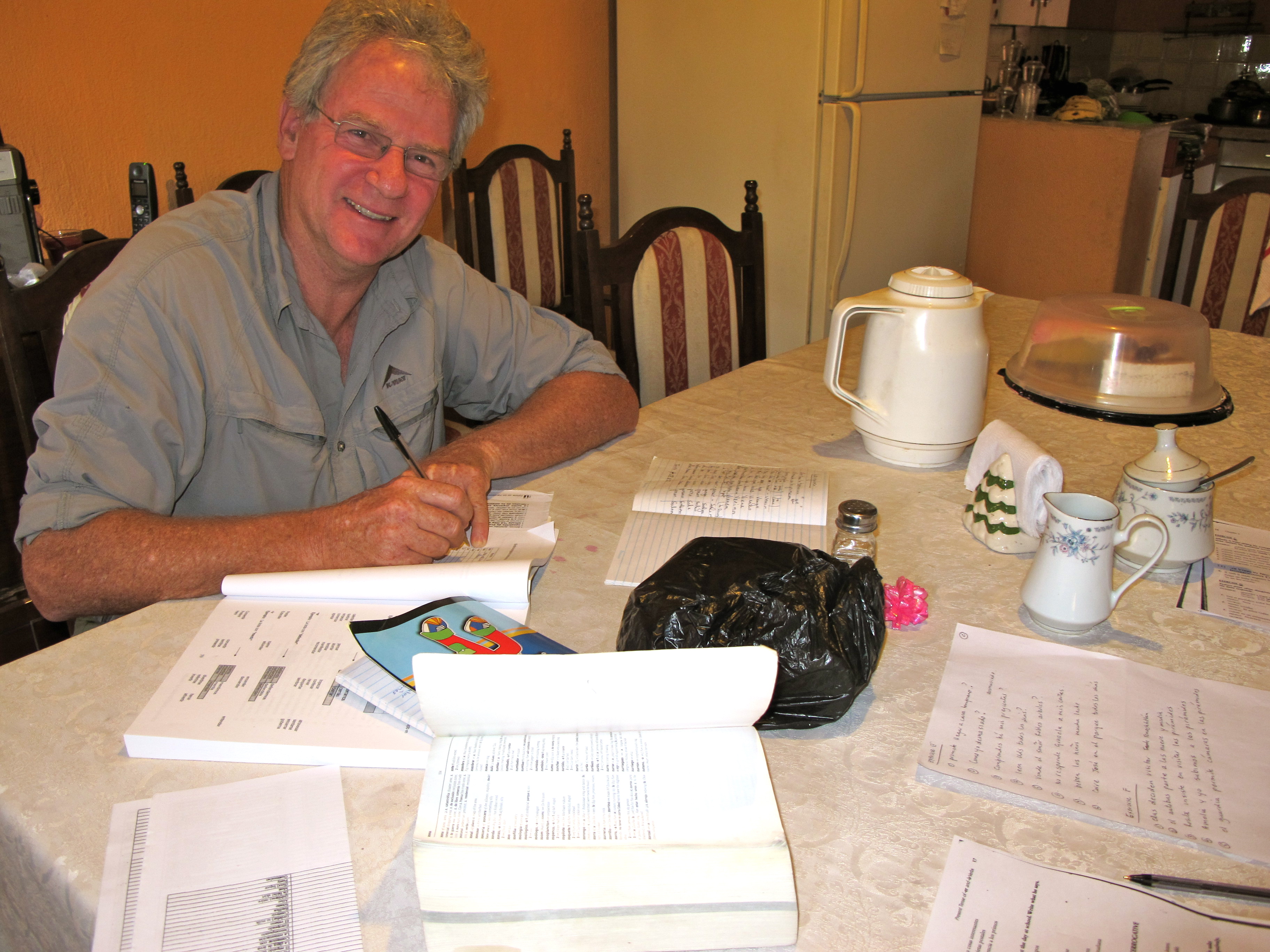
Adventurouspirits

Janet and Tom,
We had a fire in our vehicle, started by a battery as well. In our case, something had rattled free and fallen across the two terminals of the battery. Of course, we made it all the way to Argentina before our fire. Also, I believe we were all fully clothed!!
Thanks for the update guys. Enjoy Antigua and don’t forget to get your fill of Guatemalan coffee and culture while you are there! Travel safe.
Hey big sister, you better take care!!! Very pleased all is well and there was not a more serious disaster!
Lots of love
Margaret
Very “Indiana Jones”!